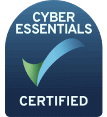When you’re working on a content SEO task, you will fully understand what you’re doing, why you’re doing it and what you want the end result to look like. But if you were asked to write the process down, would you be able to? Would your colleagues understand? And could your process be replicated and scaled?
If the answer to all the questions above is a resounding no, then it may be a good idea to turn your internal processes into external documents that can be used to help your colleagues understand what they need to do and the objectives they will be achieving.
Having such processes written down can help with ensuring nothing is left out, that colleagues can perform the processes, and future hires can be trained on them.
As you prepare to create your content strategy document, it’s worth ensuring you have answered the following eight questions.
1. What are we trying to achieve?
This question has two different layers to it. Firstly, you want to ensure that the document achieves the purpose of informing whoever reads it in the most effective way. To this end, you will want to test out the document once it has been created, so that those trying the process for the first time can follow the steps without confusion.
The other goal will be more specific to the type of document you are creating. For example, you may be documenting a process for a content audit. Once the process has been completed, you want to know that the below goals have been achieved – as well as others that come with a content audit:
- a comprehensive inventory has been taken
- gaps, overlaps and inconsistencies have been noted
- a performance evaluation has been undertaken
2. Is this process scalable?
You may be the only one who knows how to carry out a specific process right now, but there may come a time when you aren’t at the company anymore, you’re away for a while or the company wants to expand your department. In such situations, having training documents available is key so that your employer can increase productivity, perform the processes on a larger scale and ensure data or statistics are compiled as thoroughly as possible for internal stakeholders.
Steps you can take to ensure a content strategy document is scalable include starting off with an executive summary, incorporating the business objectives from the outset, encouraging those performing the process to apply the KPIs to the workflow and ensuring there is a clear process for resource allocation – for example, defining which colleagues or tools will be needed to help the person complete the process.
3. Can this process be applied to any campaign or topic?
If we take the example of the content audit process, we should consider that it may be applied in different scenarios. For example, your company may wish to audit the entire site ahead of a migration, or drill down into a specific section for optimisation. Your document may even be picked up by another team, such as social media, so they can identify how to improve engagement or other key metrics by evaluating their output thus far across all platforms.
To make your document as flexible as possible, ensure that it can be customised and tailored to individual needs. If colleagues can work interactively with the process and make it work for them, it will result in the most effective outcome. Leave spaces for people to define their specific objectives, as this will set the tone for the rest of the process.
Allowing for different working styles, choices and resource availability is also important – for example, your company may switch to use a different keyword tool in the future, or some colleagues may be more visual learners and benefit from screenshots. Include information in a variety of formats and suggest alternative ways that steps in the process can be carried out to achieve the same goal.
4. How does this process fit into the bigger picture?
A content strategy process should fit seamlessly into the bigger picture, like a piece of a jigsaw puzzle. There will always be overarching business objectives to achieve, where the content process will serve as a vehicle to help progress these goals.
Whenever you create a strategy document, consider how its completion will assist with wider company goals. For example, completing a content audit according to standardised procedure can help internal stakeholders to understand where content needs fine-tuning or expanding to better serve audience needs. Establishing where content is and isn’t working will assist with creating more targeted buyer personas, which is useful information for the company to be aware of.
When creating a strategy document, ensure wider goals like these are set out, as well as the process-specific goals.
5. Will the end result be consistent?
We all have different ways of working, and different tools or programmes that we prefer to use. However, when it comes to performing a content process, you want to ensure that the end result remains consistent. Not only will it help with standardising documentation, it will also help with tracking changes over time – and ensuring that information can be understood after significant time has gone by.
If there is a specific format that is best for presenting information, such as a spreadsheet instead of a slide deck, make this clear in the document. Provide a template for the person to copy and fill out, so that each process looks the same structurally and visually.
6. Have I given too much information?
While you want your content document to be informative and guide people through the process as effectively as possible, it is possible to share too much information. The result of this is information overload, which can make the process seem like a massive undertaking or beyond someone’s capabilities, when this may not be accurate.
One simple step to take is to ensure that text is broken up with screenshots that illustrate the process. Not many people appreciate having to read through a wall of text, so ensuring there is multimedia to look at will help people to digest the information. Think about your language – if you are known for waffling, make a conscious effort to use clear and concise wording. If in doubt, check the document with a colleague (this should be done regardless). Finally, ensure the information is organised logically. Your document may be a pile of ideas to start with, so keep re-ordering information until you’re sure that the recipient is being walked through a logical process.
7. How will this document improve output?
A process document should assist with improving output. When people process the document, they should be armed with a clear direction and purpose for the task at hand, along with their identified KPIs and content-specific goals.
Colleagues will be able to work largely by themselves on performing the process, which reduces time wasted on asking people for help, missing out key steps or being confused at certain moments in time.
When other departments are privy to content processes, they will understand what is happening elsewhere in the company and be able to slot in their own processes cohesively, allowing for a company-wide structure which is more transparent and productive.
8. How will the target audience be better served?
Any content process document should have the target audience at the forefront of its consideration. Alternatively, the target audience should be created or more clearly defined by following the process. The net result will be content that is more valuable, personalised and relevant.
By following a specific process, a colleague can ensure their content is useful, informative and engaging. They will be able to contribute to consistent strategy and resulting content that will build familiarity, trust and loyalty. The target audience will know what to expect and they will be able to rely on the content to consistently meet their needs.
Documents should therefore address the target audience’s needs throughout. Considering how they will be served and how the process will assist with taking the customer through the various stages of the journey will not only create improved content, but also help with assisting wider company goals.
Need help with documenting your content strategies?
Book in for a Free Acquisitions Workshop, where you will receive expert advice on creating content strategy processes for your team which will help your operations scale and retain standardised branding and messaging. Slots are filling up, so book today to avoid disappointment!












